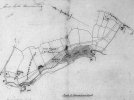Slatty
proper brummie kid
The History of Upper Witton, its Mills and Reservoirs
A watermill stood off Gypsy Lane in the 1800’s, at the lower end of Upper Witton Pools now known as Witton Lakes.
A reservoir was due to be situated at Witton Lower Pools along with the Mill and Mill House, belonging to Wyrley Birch the Landowner. In 1828 an advert appeared for Lower Witton Rolling Mill with House and pools, and excellent water wheels.... Supply of water believed to be equivalent to 5 Horsepower...... Reservoirs about eleven acres and presumed that reservoirs could be increased to supply the town of Birmingham with soft water... at much less expense than the river Tame which is 22 feet lower and of inferior quality.
In 1830 there was an advert “To LET” for the Upper Witton Mill, occupied by an edge tool manufacturer, who used it with a water powered forge, but capable of being used as a flour mill, with house, stable, outbuildings and 8 acres of land, and two large pools for the supplying the mill with abundant supply of water from various brooks nearby. Upper Witton Mill was used for edge tool manufacture and in 1834 was still Edge Tool when a partnership between William Chapman and William Lilly was dissolved. The river was also a source of power for the mills and there was some early industry, indeed Joseph Kesterman, an early publican at the Hare and Hounds in 1845, had worked as a roller in one of the mills.
In 1854 Birmingham Water Works gave notice of an application to be given to Parliament. It appears that one of the reservoirs would be situated at Witton Upper Pools where existed a Mill and Mill House.... belonging to Wyrley Birch Esq. From a paper published at the time it says that an engineer proposes to deepen and enlarge the Witton Upper Pools and convert item into a reservoir covering upwards of 30 acres. The water will flow from this storage ground through Hawthorn Brook into Witton Lower Pools whereby deepening and enlarging the area, another reservoir will be constructed. From there the water will flow through pipes to Aston Reservoir.
Near the junction of George Road and Park Road at the southern end of Brookvale Park boating lake stood Witton Forge from the 17th century. Fed by Hawthorn Brook this was known as Lower Witton Pool and was used in the 19th century as a reservoir for drinking water until Elan Valley water was brought to Birmingham in 1904. The pool and surrounding land were subsequently bought by Erdington council as Brookvale Park in 1924. Birmingham Corporation bought the lakes as a fishing reserve in 1914 and the surrounding area was opened as Witton Lakes public park in 1924.
In the late 1990’s the Hare and Hounds Public House on Marsh Hill, Stockland Green was renamed as the Mill House in a tribute to the past.
A watermill stood off Gypsy Lane in the 1800’s, at the lower end of Upper Witton Pools now known as Witton Lakes.
A reservoir was due to be situated at Witton Lower Pools along with the Mill and Mill House, belonging to Wyrley Birch the Landowner. In 1828 an advert appeared for Lower Witton Rolling Mill with House and pools, and excellent water wheels.... Supply of water believed to be equivalent to 5 Horsepower...... Reservoirs about eleven acres and presumed that reservoirs could be increased to supply the town of Birmingham with soft water... at much less expense than the river Tame which is 22 feet lower and of inferior quality.
In 1830 there was an advert “To LET” for the Upper Witton Mill, occupied by an edge tool manufacturer, who used it with a water powered forge, but capable of being used as a flour mill, with house, stable, outbuildings and 8 acres of land, and two large pools for the supplying the mill with abundant supply of water from various brooks nearby. Upper Witton Mill was used for edge tool manufacture and in 1834 was still Edge Tool when a partnership between William Chapman and William Lilly was dissolved. The river was also a source of power for the mills and there was some early industry, indeed Joseph Kesterman, an early publican at the Hare and Hounds in 1845, had worked as a roller in one of the mills.
In 1854 Birmingham Water Works gave notice of an application to be given to Parliament. It appears that one of the reservoirs would be situated at Witton Upper Pools where existed a Mill and Mill House.... belonging to Wyrley Birch Esq. From a paper published at the time it says that an engineer proposes to deepen and enlarge the Witton Upper Pools and convert item into a reservoir covering upwards of 30 acres. The water will flow from this storage ground through Hawthorn Brook into Witton Lower Pools whereby deepening and enlarging the area, another reservoir will be constructed. From there the water will flow through pipes to Aston Reservoir.
Near the junction of George Road and Park Road at the southern end of Brookvale Park boating lake stood Witton Forge from the 17th century. Fed by Hawthorn Brook this was known as Lower Witton Pool and was used in the 19th century as a reservoir for drinking water until Elan Valley water was brought to Birmingham in 1904. The pool and surrounding land were subsequently bought by Erdington council as Brookvale Park in 1924. Birmingham Corporation bought the lakes as a fishing reserve in 1914 and the surrounding area was opened as Witton Lakes public park in 1924.
In the late 1990’s the Hare and Hounds Public House on Marsh Hill, Stockland Green was renamed as the Mill House in a tribute to the past.



